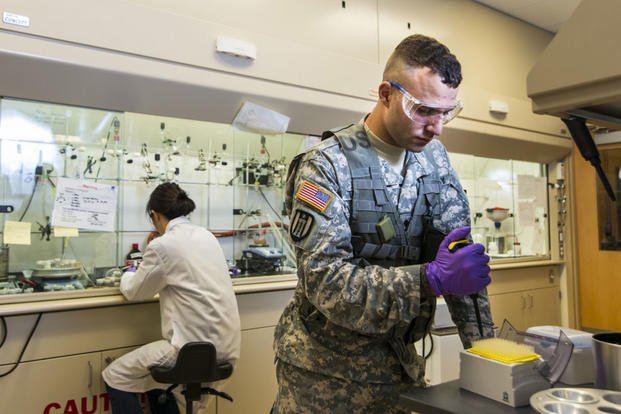Employers increasingly are finding that veterans are the right fit for jobs in the fields of science, technology, engineering and math, or STEM, according to a study by Syracuse University's Institute for Veterans and Military Families (IVMF).
Working off data from the American Community Survey of the Census Bureau for 2012-2016, the IVMF researchers concluded that military service was a main factor contributing to job growth for veterans in emerging technology fields.
Jobs requiring STEM expertise have grown 34 percent in recent years, the IVMF report said, and "veterans and transitioning service members represent a valuable, skilled talent pool from which to help meet this critical need."
Another contributing factor has been the Defense Department defining the need for more investment in STEM fields as a national security issue, said Dr. Nicholas Armstrong, senior director of Research and Evaluation at IVMF.
"This has been framed for the last decade as a national security issue," he said in an interview last week. "There's a demand for and growth in STEM jobs."
Armstrong, an Army veteran of Iraq and Afghanistan, noted that the military already has many jobs in STEM fields, particularly in cyber security.
The IVMF report examined veteran participation across 49 distinct STEM occupations, grouped into five clusters: engineering; information technology and computer science; life and physical sciences; mathematics; and supervisor/management.
"The top two STEM occupation clusters for veterans were the information technology and computer science cluster (43 percent), followed by the engineering STEM cluster (38 percent)," the study states.
The research found that "veterans are actually overrepresented, compared to civilians, in STEM jobs," Armstrong said, adding that "eight percent of all veterans in the workforce are in a STEM field, compared to six percent for civilians."
By the raw numbers, about 696,000 veterans are in the STEM workforce, or 8.1 percent of all employed veterans, he said.
Veterans in STEM fields are also earning more than their non-veteran counterparts, Armstrong said. Veterans of all eras are making just shy of $94,000, on average, in STEM jobs, compared to $86,000 for civilians, he said.
The report cautioned that veterans' continued success in STEM fields "would be dependent upon the capacity for local networks to identify high-growth STEM occupations that connect to military transferable skills, as well as the degree of collaboration between post-secondary institutions and employers in leveraging these skills in diverse career pathways."
The full IVMF report, "Enhancing Veterans' Access To STEM Education and Careers," can be seen here.
-- Richard Sisk can be reached at Richard.Sisk@Military.com.















